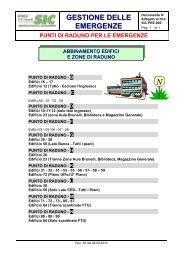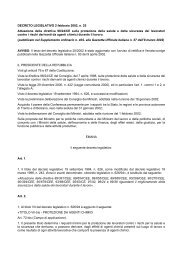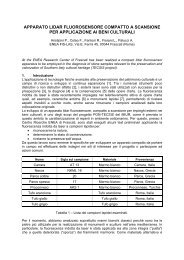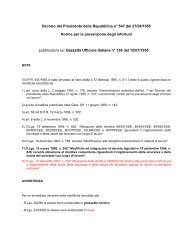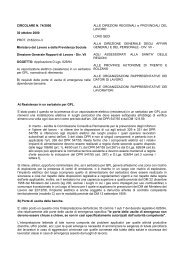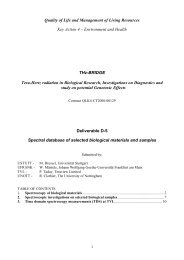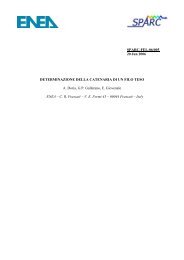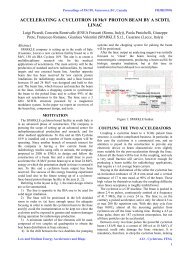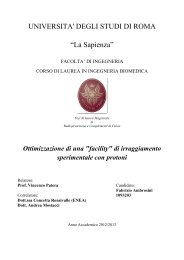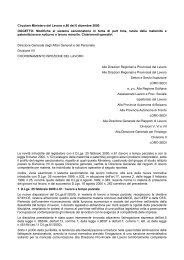Theory, Design and Tests on a Prototype Module of a Compact ...
Theory, Design and Tests on a Prototype Module of a Compact ...
Theory, Design and Tests on a Prototype Module of a Compact ...
You also want an ePaper? Increase the reach of your titles
YUMPU automatically turns print PDFs into web optimized ePapers that Google loves.
7. MEASUREMENT OF THE WAVEGUIDE-MODULE COUPLING 93<br />
Figure 5.24. Coupling through an iris. Sketch <strong>of</strong> a<br />
res<strong>on</strong>ant cavity coupled with a transmissi<strong>on</strong> line.<br />
Figure 5.25. Coupling through an iris. The generator<br />
is referred to the sec<strong>on</strong>dary.<br />
These set <strong>of</strong> parameters are involved in a equivalent circuit that represent<br />
the cavity in <strong>on</strong>e mode <str<strong>on</strong>g>and</str<strong>on</strong>g> can be used in most applicati<strong>on</strong>s.<br />
7.2. Equivalent circuits, definiti<strong>on</strong>s <strong>of</strong> Q0, QL, Qext <str<strong>on</strong>g>and</str<strong>on</strong>g> coupling<br />
coefficient β. C<strong>on</strong>sider a signal generator c<strong>on</strong>nected to a transmissi<strong>on</strong><br />
line, those characteristic impedance Z0 is equal to the internal<br />
impedance <strong>of</strong> the generator. The transmissi<strong>on</strong> line is coupled to a res<strong>on</strong>ant<br />
cavity through a magnetic coupling mechanism. The res<strong>on</strong>ant<br />
cavity is represented by a lumped circuit as it is shown in figure 5.24.<br />
The magnetic coupling mechanism is represented as a transformer,<br />
where L1 is the auto-inductance <str<strong>on</strong>g>and</str<strong>on</strong>g> M is the mutual-inductance <strong>of</strong><br />
the transformer. The coupling mechanism is supposed to be without<br />
loss.<br />
We can either refer the cavity impedance to the primary or to refer<br />
the generator to the sec<strong>on</strong>dary. The latter case leads to the definiti<strong>on</strong><br />
<strong>of</strong> matched generator, whose internal impedance is<br />
<str<strong>on</strong>g>and</str<strong>on</strong>g> this leads to the circuit <strong>of</strong> figure 5.25.<br />
Z = (ωM)2<br />
, (5.16)<br />
jωL1 + Z0



